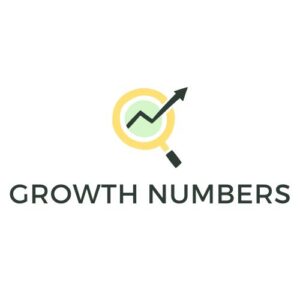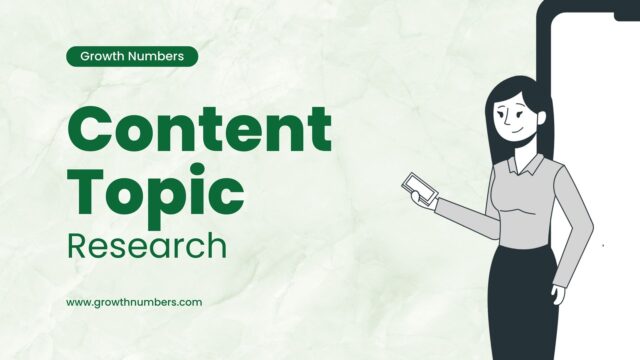Many companies struggle to see conversions from their content marketing efforts due to haphazard content topic research, ideation and a lack of focus on real customer pain points and differentiation. They often rely on outdated personal documents and fail to conduct in-depth customer research. This leads to marketing efforts that are generic and fail to resonate with the target audience.
To address this issue, our approach focuses on thorough customer research to understand who the best customers are and what their pain points and challenges are.
Conducting hour-long phone calls with companies, we delve into specifics about their customers, why they buy, and what sets their products or services apart.
This detailed content topic research helps us create content that is tailored to attract and engage these ideal customers.
Unveiling Success: The Impact of In-Depth Customer Insights on Conversions
Our entire system is built on the cornerstone of customer research, which we believe is paramount for success. Many marketers overlook this crucial step, relying instead on outdated persona documents that provide only a superficial understanding of their customers.
Our approach to customer research involves hour-long phone calls with each company to delve into specifics such as their best customers, reasons for purchase, product differentiation, pain points, and more. This in-depth understanding guides our marketing efforts and sets us apart from those who rely on outdated methods.
Understanding who are the best customers for content topic research
When analyzing a company’s customer base, it’s evident that it encompasses a wide array of customer types. This includes those who are high-paying, low-paying, easy to work with, and those who present challenges. Some customers are a delight to serve, while others may cause headaches for team members. Additionally, some customers remain loyal for years, as well as those who churn shortly after making a purchase.
To identify the best customers, we focus on four key criteria:
- Highest Paying Customers: Those who contribute the most revenue.
- Longest Retained Customers: Those who stay with the company for extended periods.
- Most Enjoyable Customers: Those with whom the company has positive and productive interactions.
- High-Need Customers: Those who have a significant demand for the company’s products or services.
We gather this information by engaging with various teams within the company, including sales, marketing, executive, and customer support/service teams. We also seek input from anyone in a customer-facing role. By compiling insights from these teams, we can identify patterns and determine the best customers.
To validate our findings, we cross-reference the information gathered with hard data, such as customer spreadsheets. This ensures that our analysis is accurate and reliable, allowing us to tailor our strategies to serve our best customers better.
Understanding Your Customers’ Challenges and Pain Points
Once we’ve identified our target customer, our next step is to understand their challenges and pain points. This phase of our process involves delving deep into our customers’ motivations and needs to create content that resonates with them effectively. Here’s what we aim to learn about our customers:
- Purchase Motivation: Understanding why they chose our product or service.
- Pre-Purchase Challenges: Identifying the obstacles they faced before making a purchase.
- Considered Alternatives: Learning about the other options they considered before choosing us.
- Product/Service Value: Determining which aspects of our offering provide the most value to them.
- Decision-Making Process: Knowing who else was involved in the buying process and their roles.
The key to this phase is curiosity. We ask questions and seek insights until we feel we truly understand our customers inside and out. This deep understanding allows us to create content that speaks directly to their needs and challenges.
Only after completing this process can we develop content ideas that will effectively attract and engage our target audience. This approach ensures that our content is relevant, valuable, and tailored to address our customers’ specific pain points and challenges.
Customer Research Questions
To ensure a comprehensive content topic research process, it’s crucial to engage with various teams within the organization. This includes asking questions to the sales team to understand customer purchase motivations, the customer success team to learn about pre-purchase challenges, and the product team to identify the most valued aspects of the offering.
These are some of the questions you should ask your sales team to find out the information you need:
What were some of the largest deals closed in the last year?
- Understanding the size and nature of successful deals provides valuable insights into the types of customers or industries that are most lucrative.
Which customers were the easiest to close? As in the shortest sales cycle… Why was that?
- Identifying customers with shorter sales cycles helps pinpoint what resonates most with potential buyers, streamlining future sales efforts.
What other products or services come up in sales conversations?
- Knowing what other solutions are discussed in conjunction with yours can reveal the competitive landscape and potential areas for product improvement or bundling.
Who typically buys the product or service, what is the most common title of the person buying our solution?
- Understanding the common buyer persona helps tailor marketing and sales strategies to better target and engage potential customers.
Out of all product or service features, are there one or two that people seem to be attracted to when buying?
- Identifying the most attractive features helps prioritize product development and marketing efforts to highlight key selling points.
These are some of the questions you should ask your customer success team
What customers have a low support headache?
- This question helps identify satisfied customers who are unlikely to churn, providing insights into what makes the product or service successful for them.
What are the most used features of the product?
- Understanding which features are most utilized can guide product development and marketing efforts to focus on key functionalities that resonate with customers.
What customers really see the value of our product or service?
Identifying customers who perceive high value helps in understanding the unique selling propositions of the product/service and targeting similar customers in future marketing campaigns.
Who are our largest accounts?
- Knowing the largest accounts helps prioritize customer engagement efforts and tailor strategies to retain these key clients.
What companies have you been able to sell additional products or services to?
- Identifying customers who have purchased additional products or services demonstrates loyalty and satisfaction, providing insights into potential upsell opportunities with other clients.
Product-Related Pain Points
What is the primary benefit that you have received from (Product or service Name)?
- This question helps identify the core value proposition of the product or service, which can be used to highlight key benefits in marketing content.
How would you feel if you could no longer use (Product or Service Name)? Why?
- Understanding the emotional attachment or dependency customers have on the product/service can help tailor messaging to emphasize its importance in their lives.
What would you likely use as an alternative to (Product or Company Name) if it were no longer available?
- Knowing potential alternatives customers would consider provides insights into competing products/services and how they perceive the unique value of the offering.
What other roles or titles besides yours do you think would get a big benefit from (Product or Service Name)?
- Identifying other potential user personas can help expand the target audience and tailor marketing content to address the needs of these additional roles or titles.
What problem were you trying to solve when you initially came across our product or service?
- Understanding the initial pain point or need customers were looking to address helps in crafting messaging that resonates with others facing similar challenges.
Tying Your Customer Research into Content Ideation
Once you’ve completed the aforementioned exercise and gained a solid understanding of your customer and their purchasing motivations, the next step is to identify keywords and topics that signal intent to purchase your product or service.
This involves utilizing the keywords uncovered during customer research, along with frequently asked questions, objections, pain points, and competitor mentions.
Using your preferred keyword research tool and leveraging Google’s suggested search techniques, you can search for relevant keywords and blog post ideas that align with customer purchase intent.
Building Your Audience: Strategies for Using Interviews to Understand Your Market
One effective approach is to connect with individuals who match your ideal customer profile. Craft a personalized message that highlights your interest in their unique story or business, tailored to resonate with them. Conducting interviews with these individuals can provide valuable insights.
Alternatively, you can follow our method: start blogging and make educated guesses about your audience’s pain points. Build your audience first, then conduct customer research once you have a sizable following that includes your target customers.
For instance, we ask our email subscribers about their content marketing challenges, which has provided us with valuable insights. We also engage with them through emails and offer assistance, building connections and trust within the community.
FAQs
Is it ok to target the same keyword with a blog post and service page? Or would you say that it leads to keyword cannibalization?
We used to advise against targeting the same keyword with a blog post and service page due to concerns about keyword cannibalization. However, our approach has evolved. If an existing page targeting a keyword is not on page 1 or 2 of search results, or if it’s on page 2 with little chance of reaching page 1, we now create a separate page to target that keyword. We suggest linking back and forth between the pages. We have observed that multiple pages from the same site can rank for the same keyword in top positions, so we are not as worried about keyword cannibalization anymore.
Do you follow a framework to differentiate between blog posts and service/landing pages?
We don’t have a formal framework; we rely on our judgment. Your suggestion is a good rule of thumb: if you think there’s insufficient content for a landing page, opt for a blog post instead.













